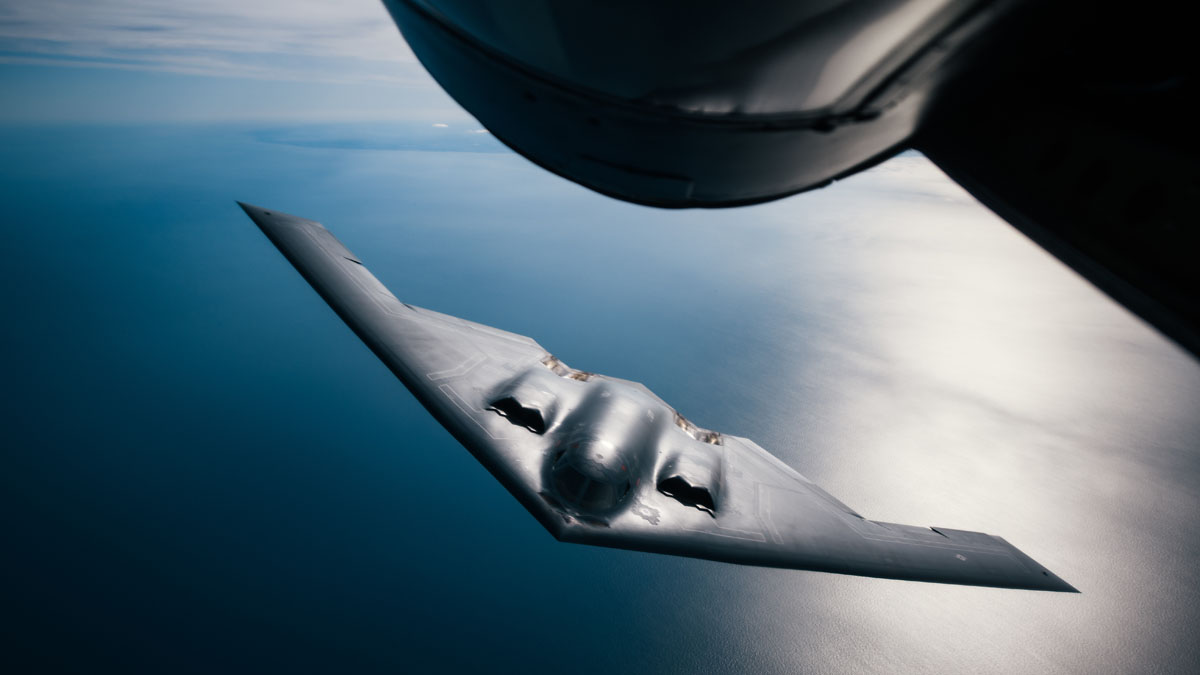How Trump used decoy B-2 Bombers to trick Iranians into letting their guards down
 A U.S. Air Force 509th Bomb Wing B-2 Spirit approaches a 351st Aerial Refueling Squadron KC-135 Stratotanker during the Bomber Task Force training exercise over England, Aug. 29, 2019. The B-2 aircraft will operate out of RAF Fairford, England, and will exercise there at U.S. Air Forces in Europe's forward operating location for bombers. (U.S. Air Force photo by Staff Sgt. Jordan Castelan)
A U.S. Air Force 509th Bomb Wing B-2 Spirit approaches a 351st Aerial Refueling Squadron KC-135 Stratotanker during the Bomber Task Force training exercise over England, Aug. 29, 2019. The B-2 aircraft will operate out of RAF Fairford, England, and will exercise there at U.S. Air Forces in Europe's forward operating location for bombers. (U.S. Air Force photo by Staff Sgt. Jordan Castelan)
Despite all the speculation about the US joining the Israelis to attack Iran's nuclear sites, US President Donald Trump didn't give any hints that the attack was imminent. If anything, Trump deceived Iran by stating that he will decide within the next two weeks whether or not to strike Iran, suggesting there remains a chance of renewed diplomacy.
For Trump, a mercurial and impulsive person, the strike was a culmination of a plan that began in 2017, during his first tenure as the President. The world was caught off guard by his announcement as the bombings came with no media leaks.
Geopolitical experts like Gregg Ramon of an American conservative think tank Middle East Forum believe Washington and Jerusalem ran an "information campaign that would make the KGB proud." "They fooled Tehran. They fooled talking heads of the far left and woke right. They fooled the think tank experts who fancy themselves too smart to be fooled," Ramon wrote in his latest post.
Even from the start, Trump advocated talks, stating he preferred diplomacy, and giving Iran 60 days to sign the deal. Even after the Israeli attacks began, Trump stressed talks, telling reporters that "Iran wanted to negotiate".
According to retired US Army Brig. Gen. Mark Kimmitt, Trump's use of "deception and trickery" was impressive. "I‘m fascinated and, candidly, I‘m impressed," he said, adding that it was beyond his understanding and comprehension when Trump offered a two-week pause. "What it was for, what was left to negotiate, what were we going to expect the Iranians to offer?" Kimmitt told CNN after the attacks.
"In many ways, it was much like a Trump deal. I mean, he‘s trying to make a deal to buy an apartment, but all of a sudden the apartment was destroyed, so where‘s the negotiation? So I think the use of deception and trickery in this case, first of all, was successful," he added.
Trump also conveniently used the B-2 Bombers to hint that an attack wouldn't happen anytime soon. Many believe the reports about the bombers leaving Whiteman Air Force Base in Missouri early on the morning of June 21 towards the west, hinting that the stealth bombers weren't heading towards Iran.
There were reports that six B-2 bombers flew West over the Pacific, refuelling over Hawaii. However, these were later proved to be decoys.
"So, that suggests to me that there was an additional B-1 package that perhaps flew eastward from Whiteman Air Force Base. Again, this was all part of the deception," according to Fox News' Chief National Security Correspondent Jennifer Griffin. She added that these were "misleading tidbits" put out there to show that Trump had indeed put off the decision.
That said, some had predicted that this could be Trump's ploy to get Iranians to let their guards down and then surprise them. James G. Stavridis, a retired Navy admiral and the former supreme U.S. commander in Europe, said on CNN a week ago that he believed this was a "clever ruse to lull the Iranians into a sense of complacency."
Middle East